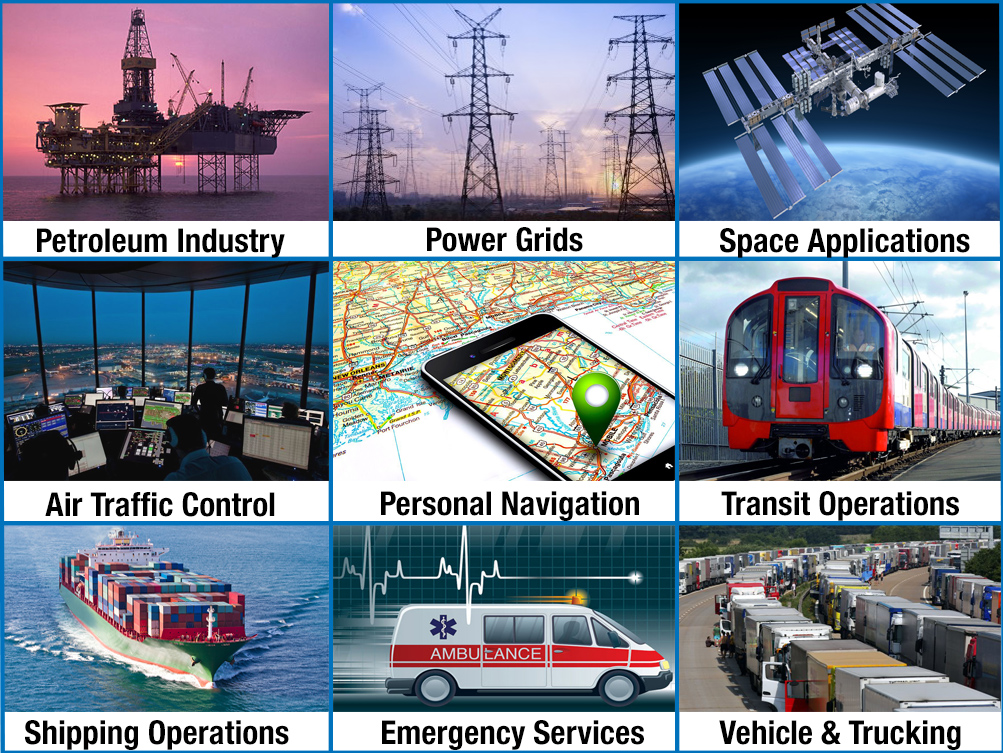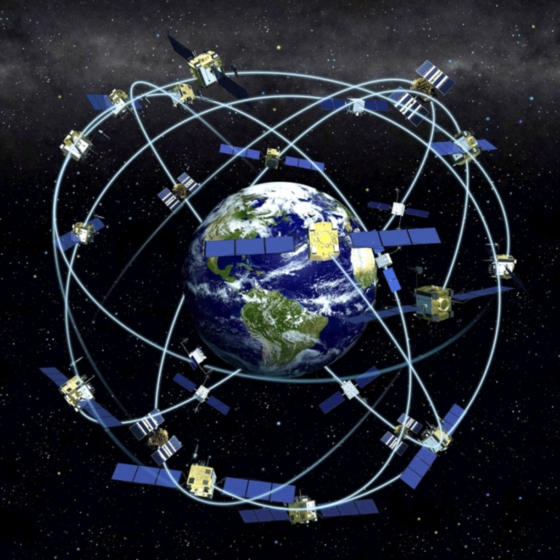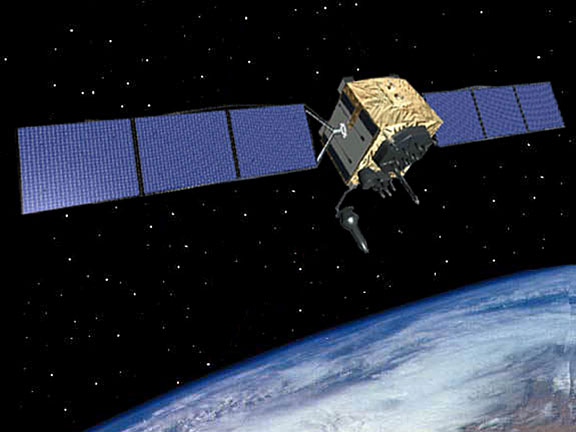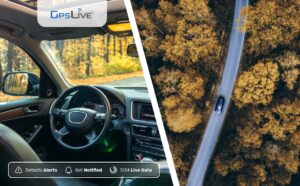The Global Positioning System (GPS) has evolved over the years, and today it has multiple uses, with the US government owning the space-based radio-navigation system. In fact, emerging technologies are now making GPS a critical element of everyday life’s applications and business, making it ubiquitous.
Current State of GPS Technology

The Global Positioning System (GPS) is a constellation of at least 24 satellites transmitting radio signals to users in order to provide positioning, navigation, and timing. Global civil GPS service has been available worldwide since 1993, continuously and free of direct user fees. Both our generation and economy depend on technological infrastructure and GPS, yet GPS signals are vulnerable to intentional and unintentional disruption.Communications, energy, emergency, transportation and space satellite deployment all depend on GPS, and the loss of
GPS signals could have unimaginable impacts on our society. Over the past few years, the US government has started upgrading GPS space satellites with new features through a multi-billion dollar effort to improve the overall performance of GPS. Older GPS satellites that have been in orbit for the past 30 years are being replaced with GPS IIR(M), GPS IIF, and GPS III.
Generations of Operational GPS Satellites
Block IIA – 0 Operational 5 Residual– 7-year design life– Launched from 1990 through 1997• Block IIR – 12 Operational– 7-year design life (oldest operational satellite is 19 years old)– Launched from 1997 through 2004• Block IIR-M – 7 Operational, 1 Residual– 7-year design life– Launched from 2005 through 2009– 2nd civil navigation signal (L2C)• Block IIF – 12 Operational– 12-year design life– Launched from 2010 through 2016– 3rd civil navigation signal (L5)• GPS III is the newest block of GPS satellites to be concluded in the late 2020s– 4 civil signals: L1 C/A, L1C, L2C, L5– First satellites to broadcast common L1C signal– 4 military signals: L1/L2 P(Y), L1/L2M– 3 improved Rubidium atomic clocks Global satellite positioning and timing depends on atomic clocks, based on Einstein’s calculations and invented by Isidor Rabi.

An atomic clock uses atomic beam magnetic resonance and calculates the vibrations of caesium molecules. Each GPS satellite has an atomic clock to be used for timing calculations. In 1967, atomic clocks were proved to be accurate to as much as 1 second in 100,000 years, and are currently used by many nations in order to determine the national time, as well as in satellites.
GPS enhances everyday civil life, for GPS receivers enable and improve aviation, search and rescue, surveying and mapping, trucking and shipping, fishing, tracking, space exploration, offshore drilling, and also have many scientific uses.
GPS has been used in planes, cars, trains, boats, watches and cell phones, as well as for improving productivity and efficiency in many areas. GPS also furthers scientific aims, such as weather forecasting, earthquake prediction, and environmental protection.
Furthermore, the precise GPS time signal, derived from atomic clocks, is embedded in critical economic activities such as synchronising communication networks, managing power grids, and authenticating electronic transactions.The US encourages GPS compatibility with foreign GNSS services and promotes transparency in civil use.
New Developments in GPS
The new GPS signals are designed to enable interoperability between international satellite navigation systems such as Galileo and GLONASS. The main focus of the new GPS program is to add new signals to the satellite constellation.
The United States and Europe originally developed L1C as a common civil signal for GPS and Galileo. Japan’s Quasi-Zenith Satellite System (QZSS) and China’s BeiDou system are also adopting L1C-like signals. A new generation of GPS satellites is currently in production, and GPS III will begin launching in 2017, to be available on 24 satellites in the late 2020s.
As of February 2017, there are 31 operational GPS satellites in the orbit. Nineteen of these satellites broadcast L2C and the other twelve broadcast L5 signals. All twelve of the GPS IIF satellites have been launched and placed in orbit. Currently, the US is working on GPS III. The new constellation of satellites will enhance signal reliability and accuracy and have a 15-year design lifespan.
The US Air Force has given the production contract of GPS III satellites to Boeing, Lockheed Martin and Northrop Grumman to produce high-quality hardware.To enable worldwide usage of satellite positioning (GNSS / Global Navigation Satellite Systems), GPS receivers can receive signals from USA’s NAVSTAR Global Positioning System (GPS), Russia’s Global’naya Navigatsionnaya Sputnikovaya Sistema (GLONASS), India’s Regional Navigational Satellite System (IRNSS), Japan’s Quasi-Zenith Satellite System (QZSS), China’s BeiDou and Europe’s Galileo satellite systems. GNSS is the standard generic term for global satellite navigation systems that provide global GPS coverage.
As of today, GNSS receivers have been used in drones, IOT products, sensors, intelligent transport systems and GPS tracking systems, and half of all current GPS receivers in use can receive signals from two or more GNSS systems. Seven billion GPS receivers are being used in all sorts of vehicles and devices in 2017, and it is supposed to reach ten billion by 2023.After the deployment of new satellites, the accuracy, uptime and accessibility of GPS will improve all around the world.
Technology has been moving at a rapid pace in the 21st century, and GPS is no exception. With the development of new software, the new generation of GPS vehicle trackers in the 2020s will have an increased accuracy, up to centimetres close to an asset. The future of GPS tracking is going to be more accurate and effective for personal tracking, as well as business use. More information on new satellites and GPS modernization can be found on gps.gov.
Conclusion
GPS future technology will unlock robust technological advancements and offer exceptional advantages to consumers, making their lives simpler. The future scope of GPS tracking systems will revolve around data generation and make data more accessible, wherein organisations and a commoner can use data to make wise decisions and strategies.
FAQ’s
What is the future of GPS?
GPS is an acronym for Global Positioning System. It’s used to determine your location by using satellite signals. The reason why GPS is so important is that it helps people find their way around. Without GPS, we would be lost all the time. It’s like being on a road trip without a map or GPS system to help you get there. That’s why many people are looking forward to the future of GPS because it will be much better than it is now.
The future of GPS is expected to be great. It will soon be able to tell us how far away we are from a location and how long it will take us to get there. It will eventually be able to detect speed limits and warn drivers if they go over them, which could help reduce traffic accidents, all on your smartphone.
In fact, all our smartphones today are equipped with GPS technology, and you can use it in apps like Find my Device or Find my iPhone. We can also expect the size of GPS trackers to be smaller in size as batteries will get more modern, taking less space altogether.
GPS technology could have been used by only the government and large-scale organisations when it was introduced. But today and in the future, GPS technology applications can be accessed by everyone for several purposes. Whether for personal or business use, this technology is here to stay.
The Internet of Things (IoT) technology will further advance GPS technology and foster more robust connectivity. IoT and GPS will enable consumers to track anything from documents to cars and even luxurious valuables.
What are the uses of GPS in everyday life?
Many people know GPS as a tool that can be used for navigation and interactive mapping; however, GPS technology is diverse, and one can use it for several purposes.
- Apart from navigation, you can use GPS to avoid traffic jams and congestion and reach your destination at the earliest. GPS systems help you to reroute to alternative routes quickly, eliminating the wait time in traffic.
- It can be challenging to monitor your pets, especially if you’re not around. With the help of a GPS tracker attached to the pet’s collar, you can get its real-time location details and locate them instantly.
- If your laptop or phone gets stolen, you can use the in-built GPS technology to find and recover it as soon as possible.
- You can even prevent your car from getting stolen by using GPS tracking devices. These devices alert you if someone tries to break in or steal the car. You can use the location tracking feature and share the real-time location details with cops to get the car back.
- The latest GPS technology also warns of reckless driving behaviour. This is very helpful when parents have to keep a close watch on their teen kids and improve their driving skills.
- Commercial fleet businesses can install GPS trackers in their vehicles and get access to data like engine health, fuel consumption, speeding, ignition on and off times, and even schedule preventive maintenance.
- Personal GPS trackers can help you monitor your kids’ movements and for children with Alzheimer’s. All you have to do is keep the tracker in your kids’ bag and get notified of any unusual activity.
- GPS devices can be used to protect your luggage or belongings during travel. If you lose them, you can track their whereabouts and get notified of the theft.
- GPS latest technology can be used to track your workers on the field and get updates on their job progress and completion.
- Along with navigation, you can find nearby places around you. This is helpful when you’re travelling, and you need to stop somewhere to grab a drink.
How can GPS be improved?
While the future of GPS technology looks promising, certain loopholes can foster robust advancements if addressed. No clear skies, tall buildings, or mountainous regions can disrupt radio signals and result in poor accuracy, and operational control system delays can also affect GPS efficiency.
Expert criminals can even try to confuse the GPS receivers and jam the signals for their benefit. However, manufacturers are trying to create GPS trackers with anti-jamming features to prevent criminals from succeeding in their endeavours.
Likewise, GPS satellites and devices are also vulnerable to cyberattacks. If the attack is successful, it can result in losing valuable data and significantly affect critical operations.



Without a double, GPS has changed the way people live and communicate with each other. GPS has made our environment a safer and easier place to live.
We are interested for your product